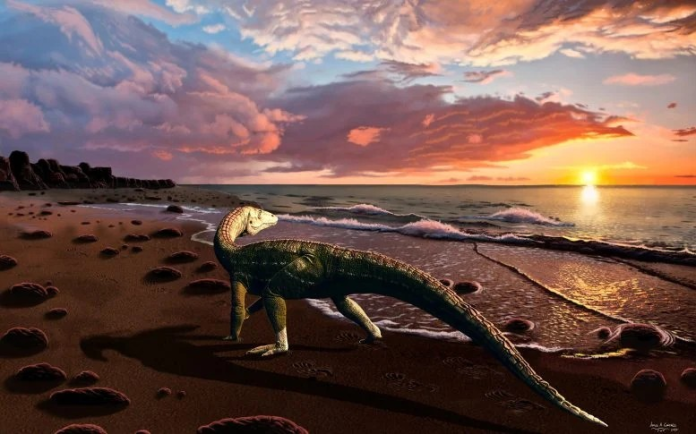Facebook Twitter (X) Instagram
In a remarkable breakthrough, paleontologists have unearthed fossils of an Ancient Marine Predator in Nevada, fundamentally reshaping our understanding of marine ecosystems during the Triassic period. The newly discovered species is a pseudosuchian archosaur, a distant relative of modern crocodiles, estimated to have lived approximately 220 million years ago. This find not only expands our knowledge of ancient marine life but also underscores the global distribution of these formidable predators.
Discovery Details and Significance of the Ancient Marine Predator
The discovery was made in a remote part of Nevada, an area that was once a coastal region during the Triassic period. The fossil is exceptionally well-preserved, allowing scientists to conduct detailed studies on its anatomy and behavior. This species of pseudosuchian archosaur appears to have been a dominant predator in its ecosystem, preying on a variety of marine organisms. Its powerful jaws and sharp teeth suggest it was well-adapted to a predatory lifestyle, much like modern-day crocodiles.
Implications for Understanding Triassic Ecosystems
The presence of this predator in Nevada implies that pseudosuchian archosaurs were more widespread than previously thought. Their existence in what is now North America indicates they had a significant ecological impact across different regions. This find adds a new dimension to our understanding of Triassic marine ecosystems. This suggests a complex and interwoven food web with pseudosuchian archosaurs at or near the top.
Ongoing Research and Future Studies of the Ancient Marine Predator
The research team, which includes experts from several leading institutions, plans to conduct further analyses of the fossil. Studies will focus on understanding the species’ life history, including its growth patterns, diet, and role within its ecosystem. Additionally, the team hopes to uncover more fossils in the region. This could provide further insights into the diversity and evolution of marine life during the Triassic period.
Broader Impact of the Discovery
This discovery is part of a broader effort to map out the ancient history of life on Earth. By uncovering and studying such fossils, scientists can piece together the evolutionary narrative that led to modern marine ecosystems. The pseudosuchian archosaur adds to the growing list of species that provide a glimpse into the rich and diverse world of prehistoric marine life.
This discovery captivates the public’s imagination, reminding us of the incredible diversity of life that once existed on our planet.

